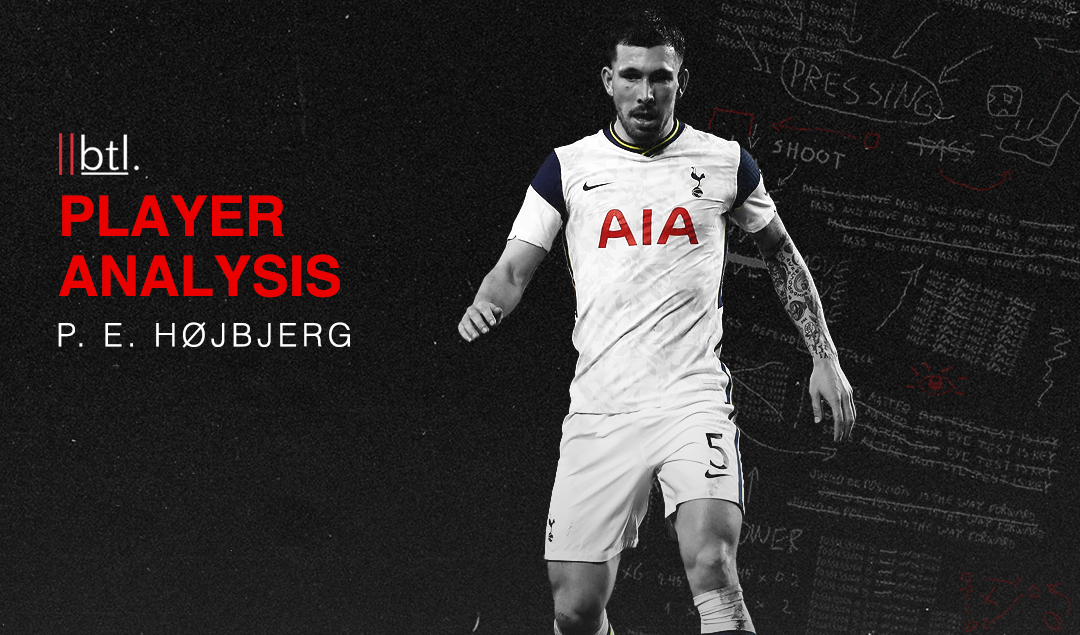Pierre-Emile Højbjerg: Le Gladiateur de Marseille
To win in football, the midfield battle is key. This contest can be won in many ways, using diverse player profiles. Yet, most managers will tell you that balance is the one thing they crave from their midfielders.
Whether it’s a two-man or three-man setup, the players in the engine room must complement each other’s styles well. The best midfielders don’t just elevate their own performances; they bring out the best in those around them. There are many who excel in this regard, but few are doing it as consistently and as effectively as Pierre-Emile Højbjerg.
Background
Born in Copenhagen, Højbjerg quickly stood out, joining Bayern Munich at 16, where he became their youngest-ever Bundesliga debutant and earned Pep Guardiola’s praise. After loan spells in Germany, he moved to Southampton in 2016, where he became captain, and later to Tottenham Hotspur in 2020. Now at Marseille, he’s cemented his place as the engine of their midfield since arriving this past summer.
Leonardo Balerdi: The Argentine Defender Emerging as Marseille’s Man Mountain
Marseille have enjoyed an impressive start to the Roberto De Zerbi era and currently sit second in the Ligue 1 table with 43 points from 21 matches — six points above Nice and Monaco, and 10 points behind Paris Saint-Germain — and boast the second-best attack in France with 45 goals scored. One year after suffering a dismal eighth-place finish and missing out on European football, they’re on track to return to the UEFA Champions League thanks in large part to their Danish midfield metronome.
Main Strengths
-In-game intelligence
-Tactical awareness
-Quick thinking
-Aggressive in duels
One thing that stands out instantly for anyone who has watched the Danish midfielder this season is his remarkable understanding of the game. It is evident in the small but crucial actions he performs that consistently benefit his team. Pep Guardiola witnessed this intelligence firsthand during Højbjerg’s time at Bayern Munich: “He is a smart player, he understands the game. He has a great football IQ.”
When Roberto De Zerbi took charge at Marseille, it became clear that the club needed someone who could seamlessly adapt to the tactical demands of the Italian coach in the heart of the midfield. In Pierre-Emile Højbjerg, they’ve found that player.

Højbjerg (indicated by the green circle) is seen here positioned just in front of a Monaco player. At first glance, it might appear as though he is doing nothing. His action—or lack thereof—won’t show up in the stats and won’t earn him applause from the stands, but his teammates will be the first to recognize how invaluable his positioning is in this moment.
By staying disciplined, Højbjerg forces the ball carrier wide—exactly what his team wants. Why? Because the touchline acts as an additional defender, limiting the opponent’s options. This enables his team to press aggressively with greater confidence.
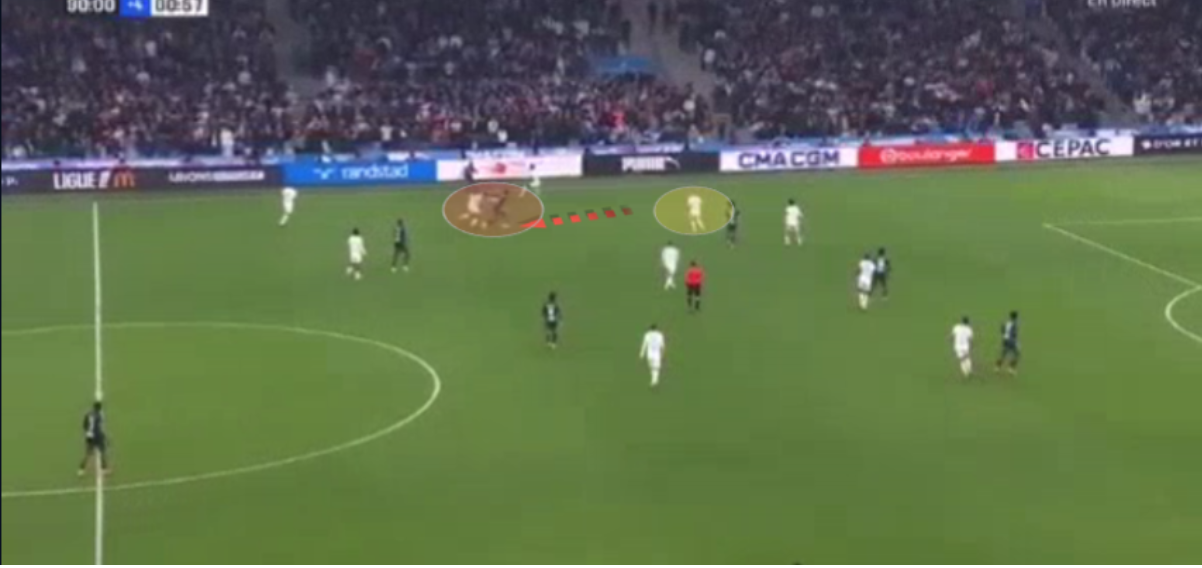
Even with the ball out wide, the Dane maintains the exact same position—just in front of the Monaco player. Højbjerg quickly recognizes that one of the opposition players (indicated by the red circle) has managed to get past his marker. In response, he positions himself perfectly: cutting off the passing lane to the opponent behind him while also staying ready to engage the Monaco player making a forward run.
The position he takes up here effectively kills two birds with one stone. A simple action, but one not every player will make, especially considering that this all happens in the space of four maybe five seconds. It requires a high level of not only awareness but discipline.
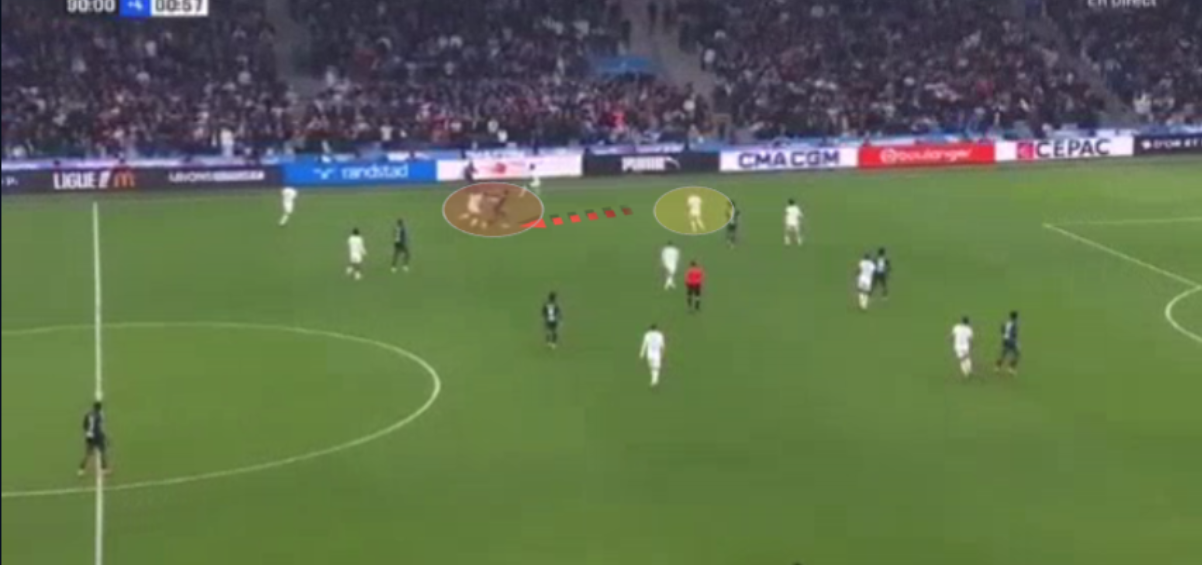
As the move develops, Højbjerg makes a calculated decision to move away from the man he has been tightly marking throughout the sequence and charges forward in a specific direction. Why is this the perfect moment to do so?
- The Monaco player’s movement inadvertently simplifies the situation.
The Monaco player, who initially looked like he might get past his marker, has now reduced his chances of receiving the ball. His run has made it easier for his marker to block the passing lane, effectively neutralizing him as an option. However, his movement has created space for the ball carrier to exploit—an opportunity Højbjerg is quick to notice. - Højbjerg reads the ball carrier’s limited options.
The Danish midfielder identifies that his opponent now has only two realistic choices:
- Carry the ball forward into the open space (as indicated), or
- Play a sideways pass in the same direction.
Meanwhile, the potential pass to the player Højbjerg had been marking is no longer viable, as that area has become congested. Recognizing this, Højbjerg places his trust in Leonardo Balerdi (indicated by the white circle) to handle any situation if the ball does get played into that space.
This allows Højbjerg to focus on cutting off the ball carrier’s forward run or at least making it significantly harder for him to progress. By limiting his opponent’s options and forcing play into more predictable channels, Højbjerg ensures that Marseille remains in control defensively.
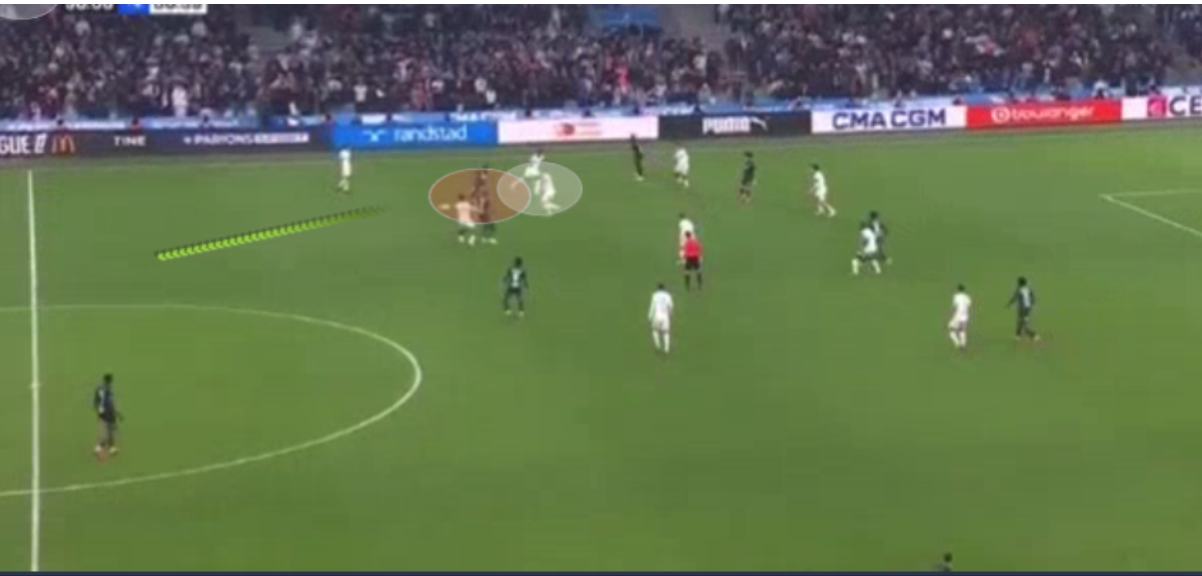
The sustained pressure ultimately forces Monaco to retreat and play a backward pass, resetting their build-up entirely. Through a combination of simple yet effective actions, sharp awareness, and tactical intelligence, Højbjerg manages to disrupt the opposition and push them back.
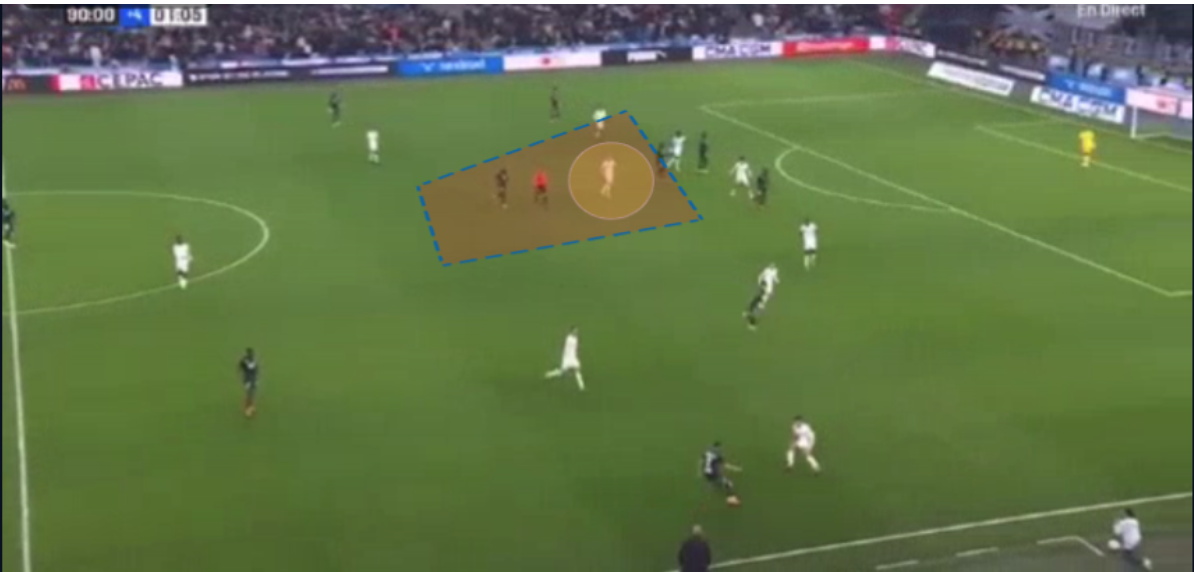
As the move develops, Højbjerg drops centrally to protect the space in that area. What’s particularly interesting is that he makes no attempt at this point to move closer to his man, Denis Zakaria, even though a pass in that direction is possible. This decision ultimately proves to be very wise.
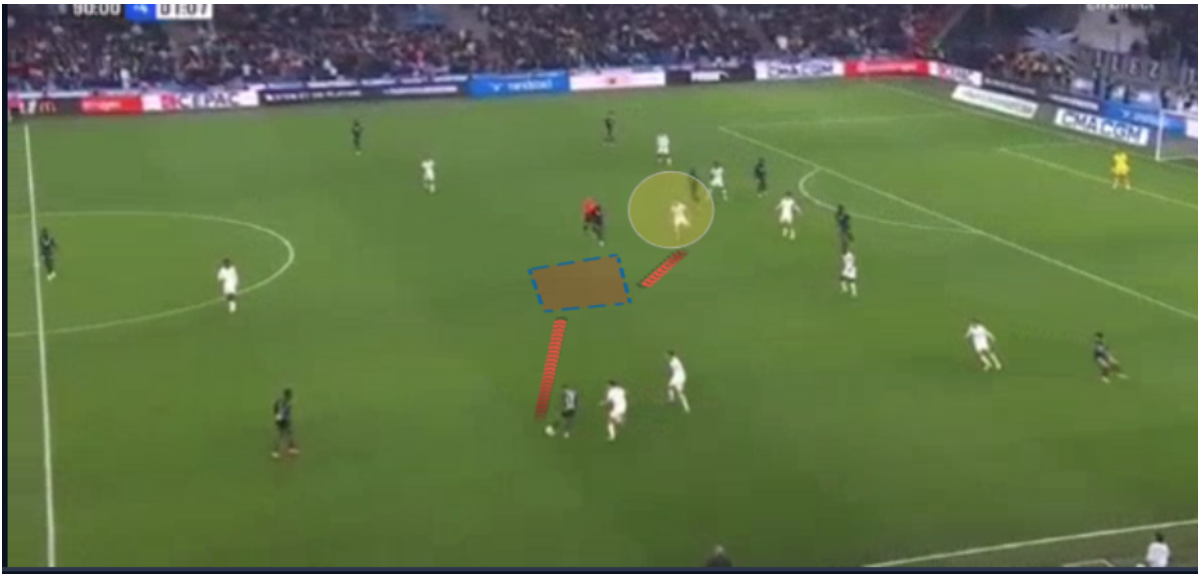
As soon as an attempt is made to play the ball, the Dane suddenly bursts forward to press the indicated space.
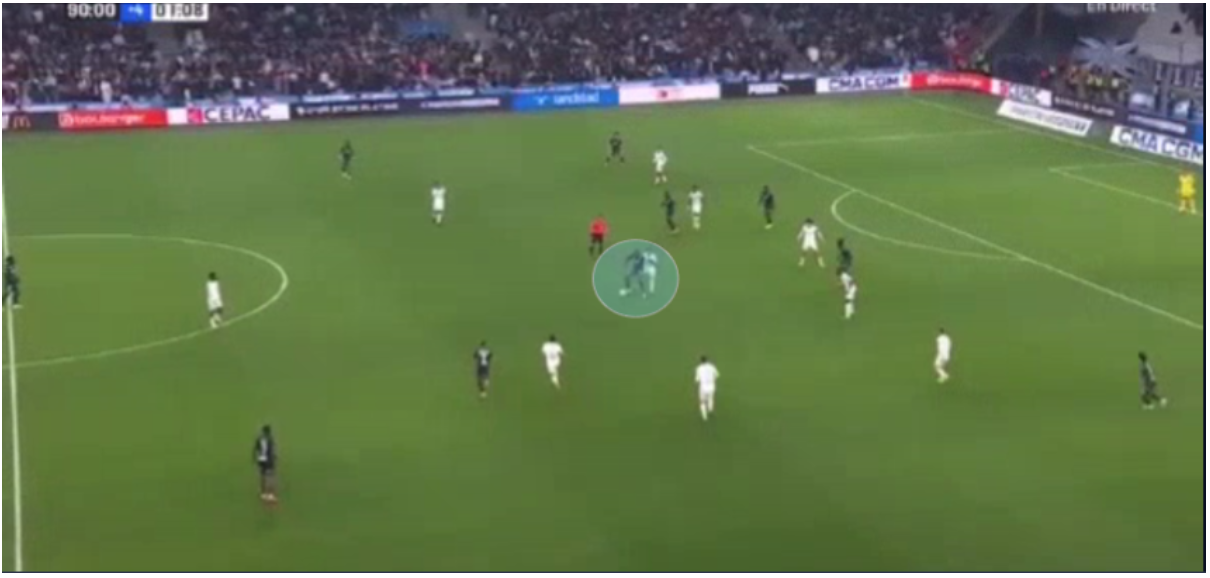
This positions him perfectly just behind his marker, restricting his options and forcing the former Chelsea man into an error.
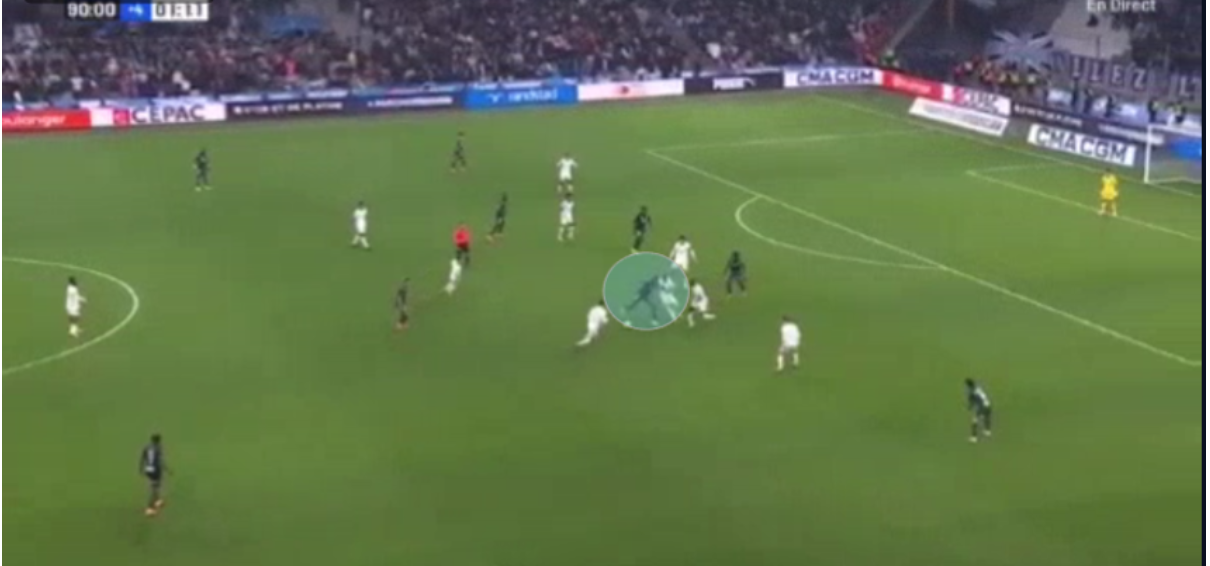
Zakaria attempts to shake off Højbjerg’s attention, but the Dane stands firm just long enough for his teammates to close in, dispossess Zakaria, and regain possession for OM.
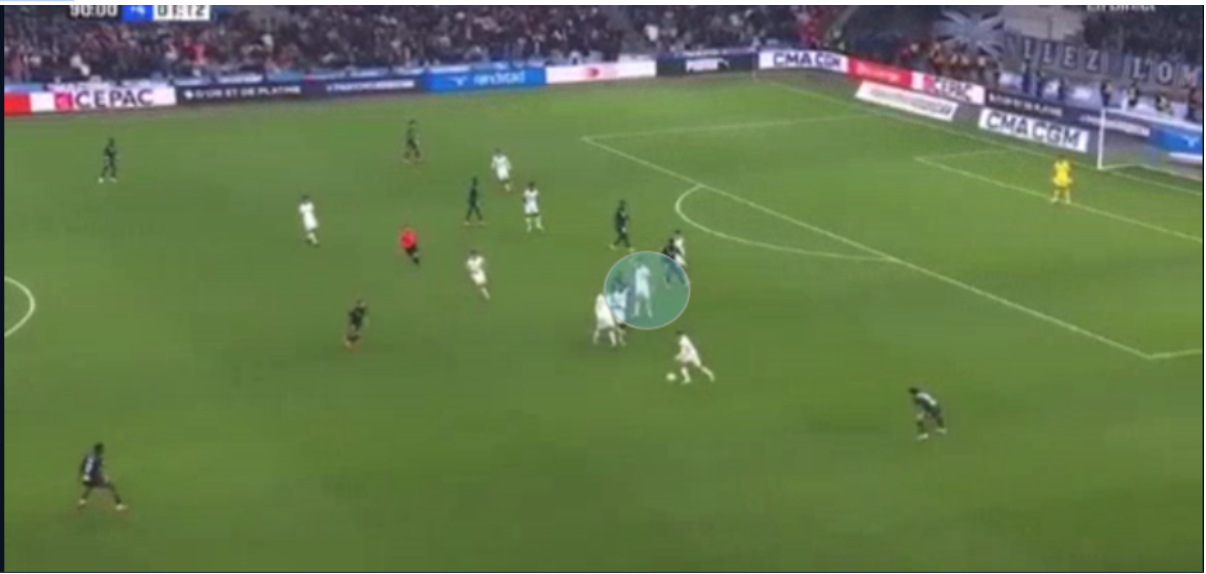
The Dane employed two key actions to regain possession. Firstly, as mentioned earlier, he dropped back and refrained from applying immediate pressure on Zakaria. Why? To give Zakaria a false sense of security.
His goal was to lure the man on the ball into playing the pass precisely into that area. If he had stepped up too early, the ball-carrier would likely have opted for a safer pass, and the opportunity to win the ball back would have been lost. It was almost like setting his own pressing trap.
Secondly, he recognized that the distance between Zakaria and the ball carrier was sufficient for him to close the gap on the Monaco skipper. This awareness allowed him to drop off slightly and bait the pass. Lastly, he was aggressive. As soon as the ball was played, he had already begun his run. The crucial part, however, is that he never drifted away from his original plan; he stuck with it and saw it through.
Why is this important? At the highest level, the margins are so small, and every detail matters. Had he hesitated for even a second, Zakaria could have used his momentum to spin away. But instead, the moment he received the ball, Højbjerg was right behind him, preventing him from turning. This might seem like a small detail to many fans, but it’s absolutely vital in any successful team.
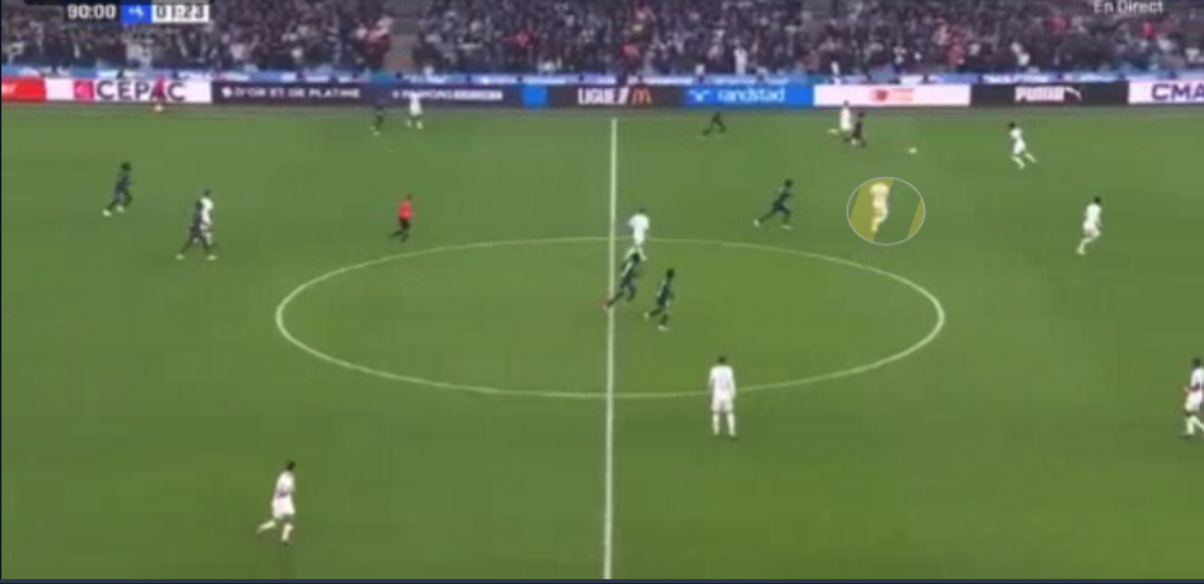
Marseille move the ball to the opposite side of the pitch, and Højbjerg finds himself in space on that side. Interestingly, he ends up in almost the exact same position he occupied against Zakaria just moments earlier—only this time, the roles are reversed.
The Dane, however, escapes the incoming pressure brilliantly. Before the ball reaches him, he takes a quick glance at his surroundings, takes note of Zakaria’s position and prepares his next move.
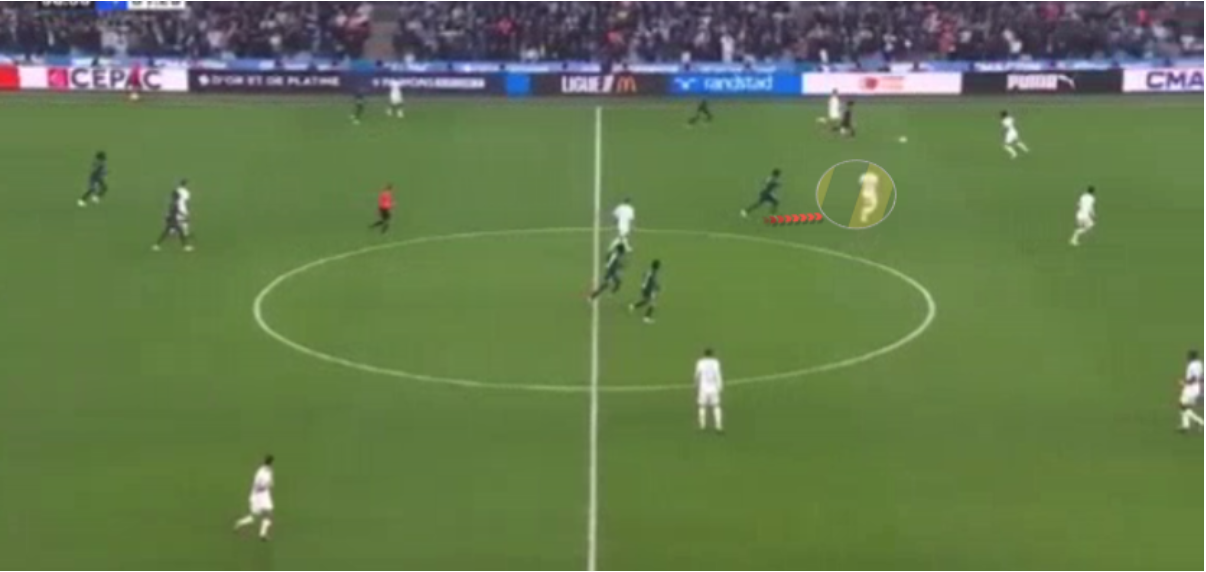
As the move develops, Zakaria attempts to close down the space but commits too early. Unlike his counterpart earlier, the Monaco skipper applies pressure before the potential pass to Højbjerg is even close to being played. At this point, the ball is still being passed to another Marseille player. The former Spurs man quickly recognizes Zakaria’s error and capitalizes on it.
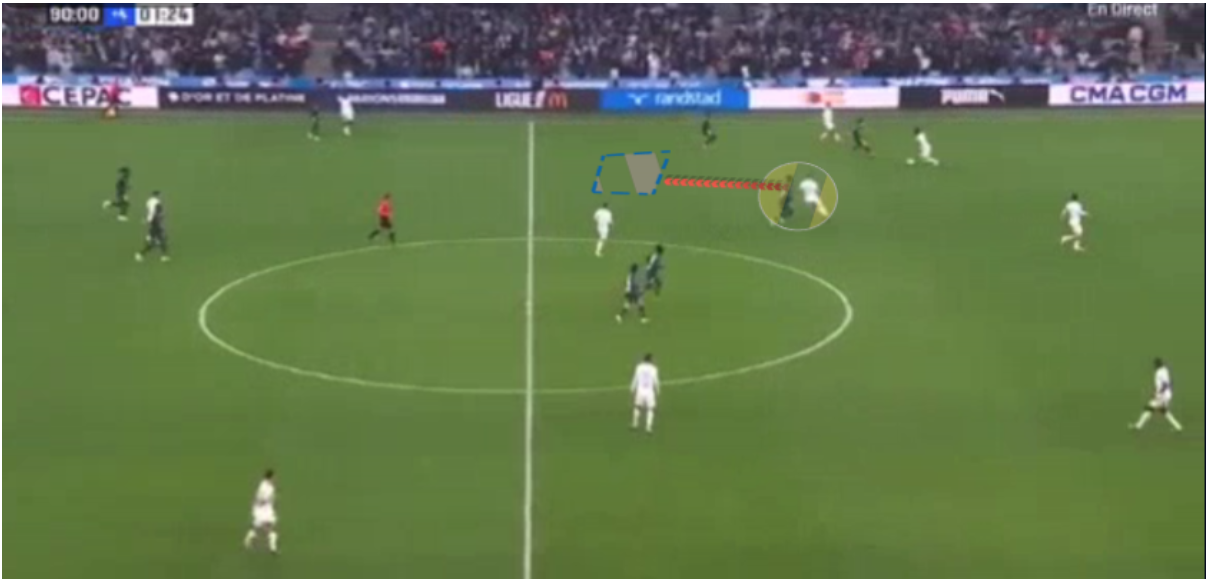
Realizing the ball is now in his teammate’s possession, Højbjerg makes a run into the space behind Zakaria—a space he likely identified during his earlier scan of his surroundings and a run he had likely planned several seconds in advance for this precise moment.
Using Zakaria’s momentum against him, Højbjerg evades his marker and receives the ball with both time and space to operate.
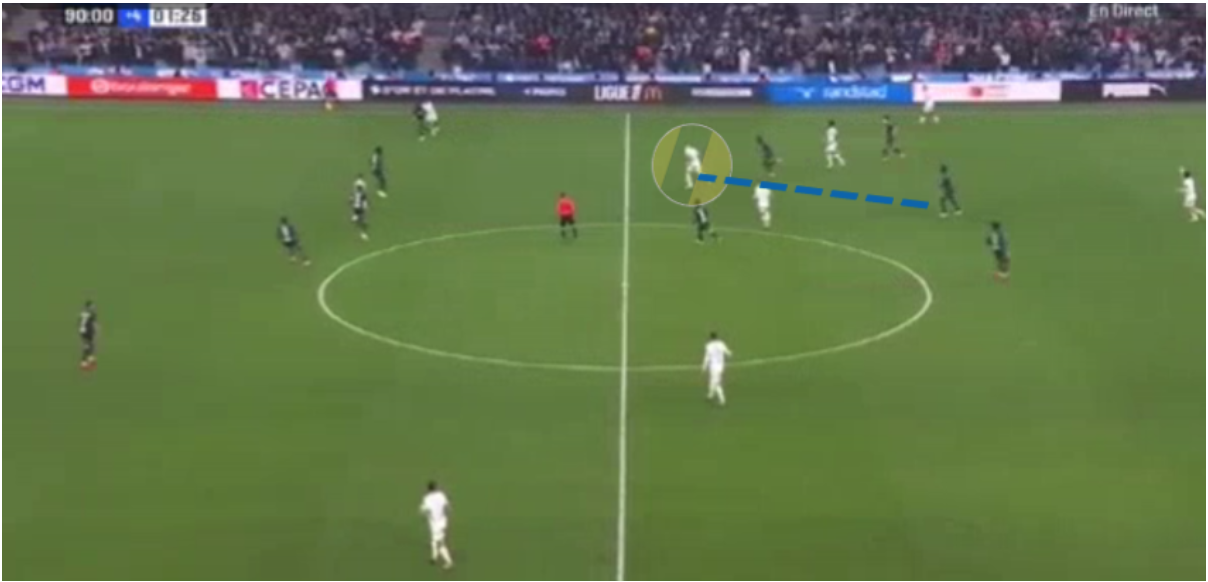
Just moments after being closely marked, the Dane manages to create significant separation from Zakaria, thanks to his intelligence and awareness of his surroundings.
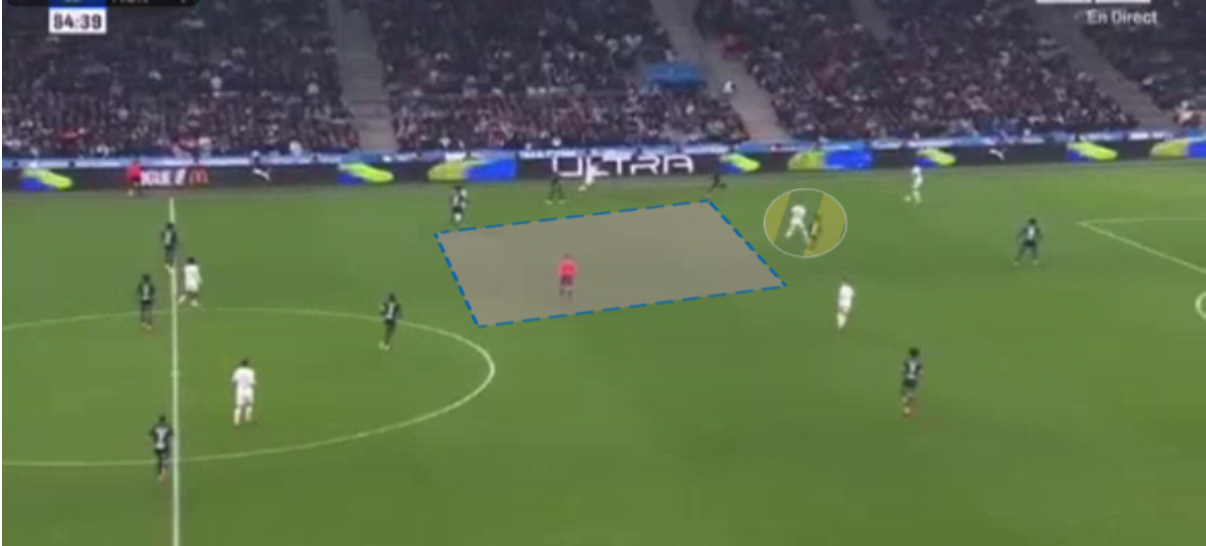
Here, Højbjerg once again finds himself closely marked by an opponent. This time, however, he spots a large space behind the marker that he can exploit, noticing it with a quick glance over his shoulder.
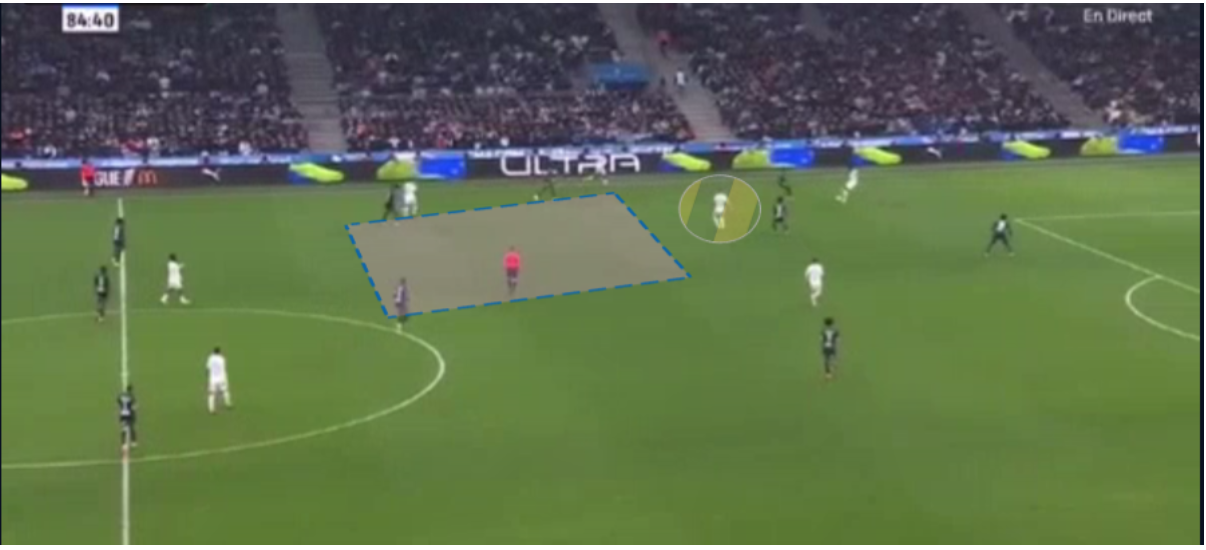
First, he takes a couple of steps away from his marker to try and create some separation or a little gap.
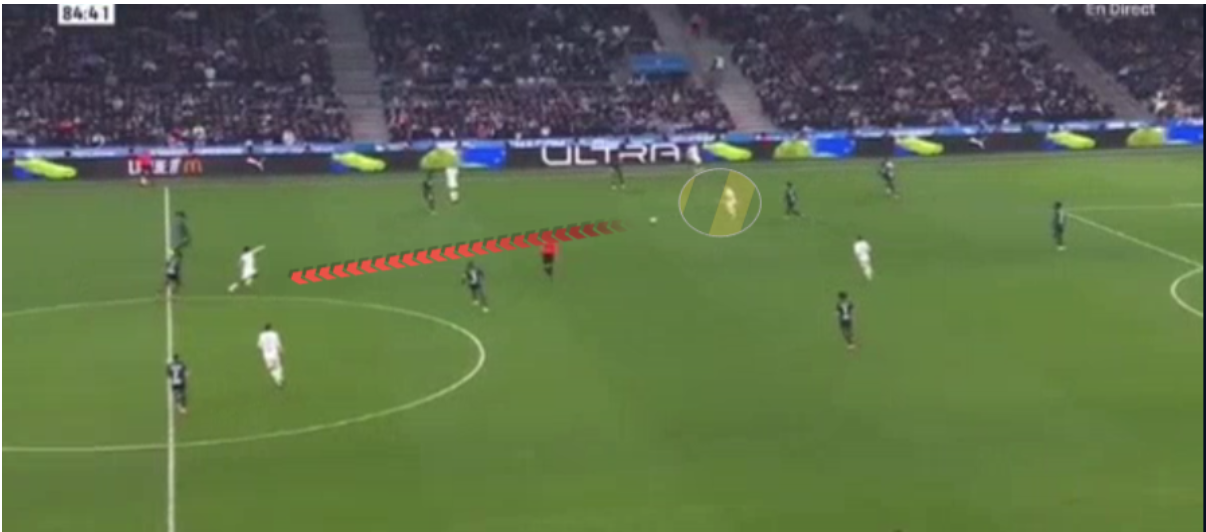
The pass is played toward Elye Wahi, but Højbjerg makes a forward run in the same direction to provide support for his teammate. It works out well for OM.
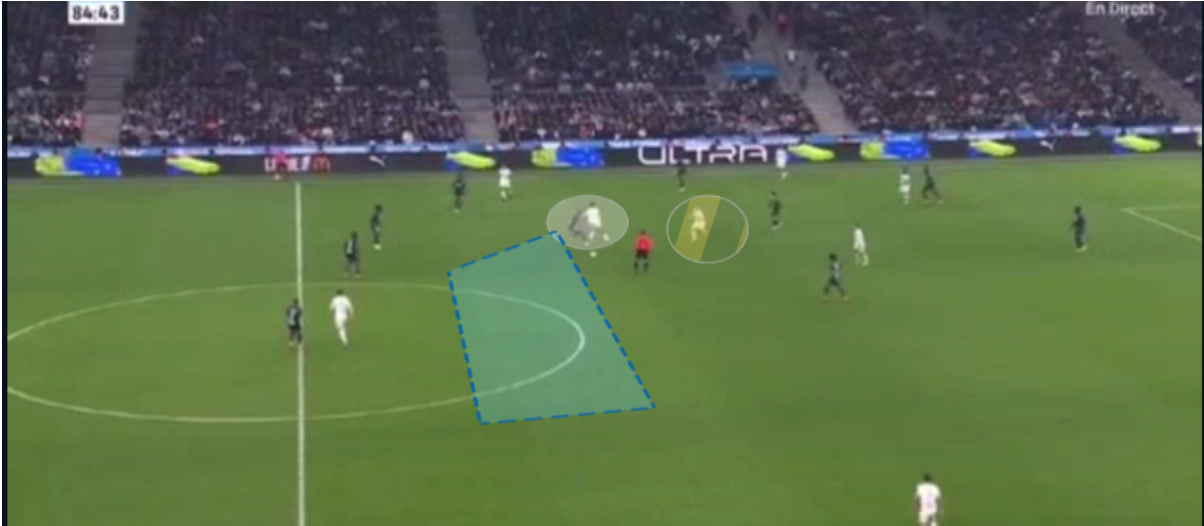
Wahi manages to flick the ball into the path of the onrushing Dane, leaving him with plenty of space ahead to exploit.

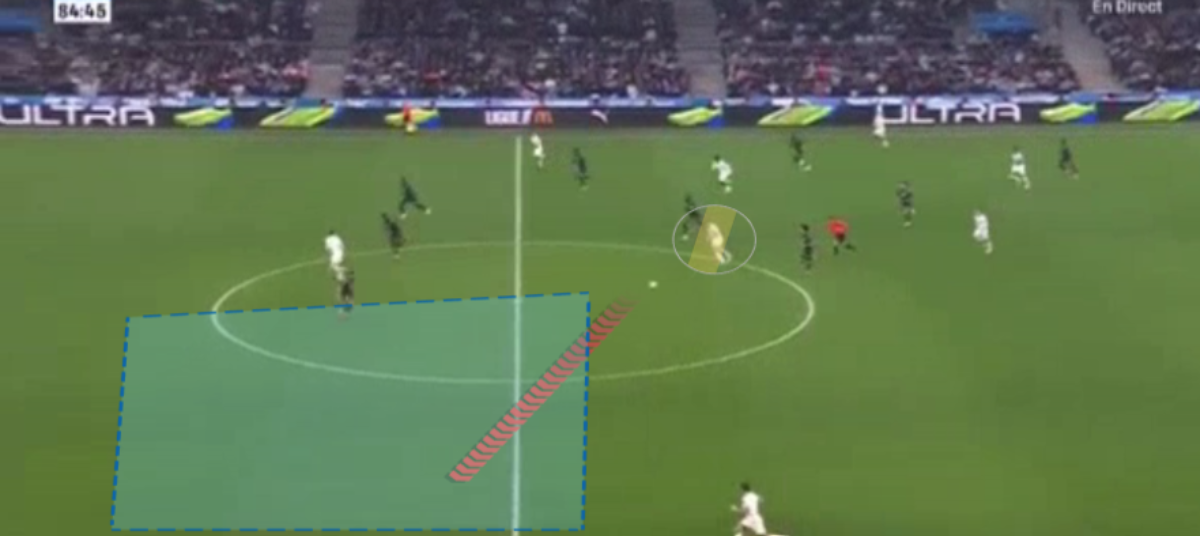
He takes full advantage of the time and space, playing a superb ball out wide for Quentin Merlin to exploit.
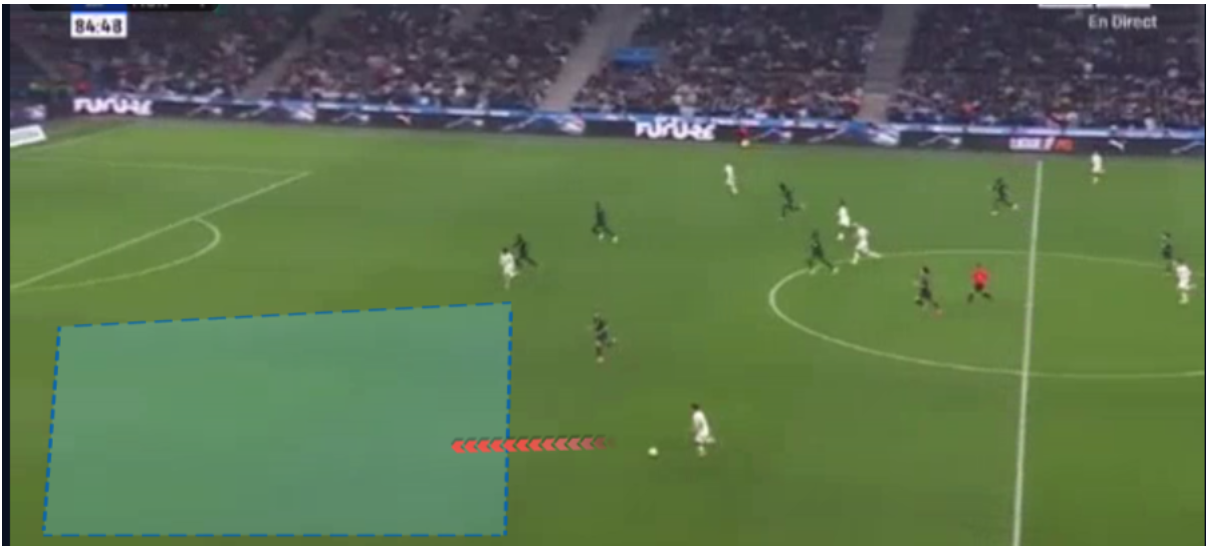
This situation would not have materialised without the clever run Højbjerg made to break the lines and find space.
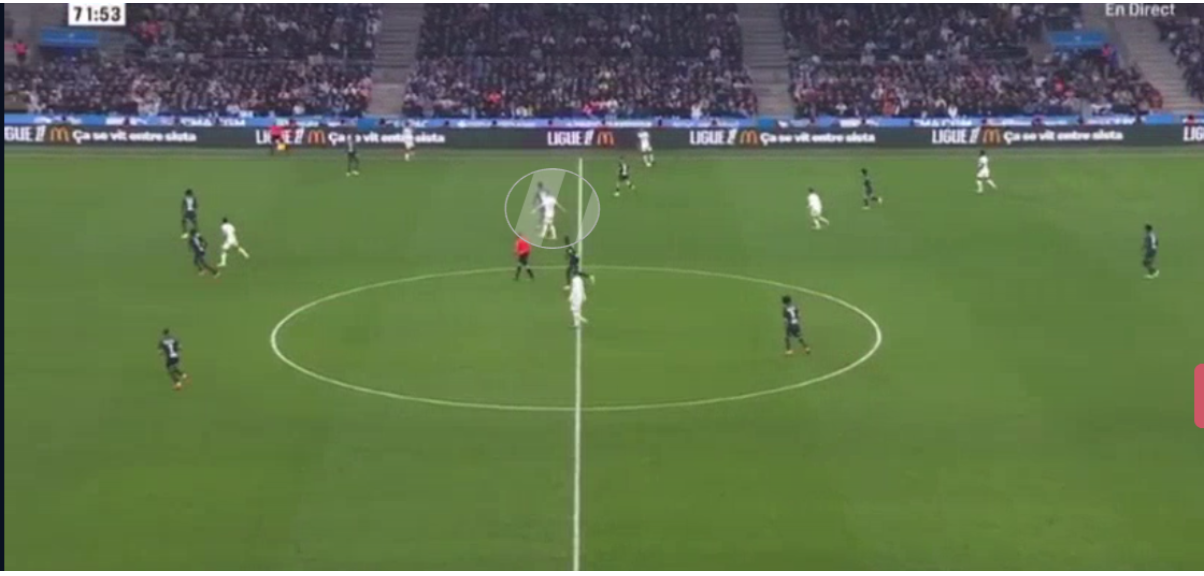
Højbjerg, indicated by the grey circle, can be seen with his arms outstretched, directing one or two of his teammates into the correct positions.

As the move progresses, he cleverly positions himself just behind the opposition’s midfield line—a spot that is notoriously difficult for the opposition to track.
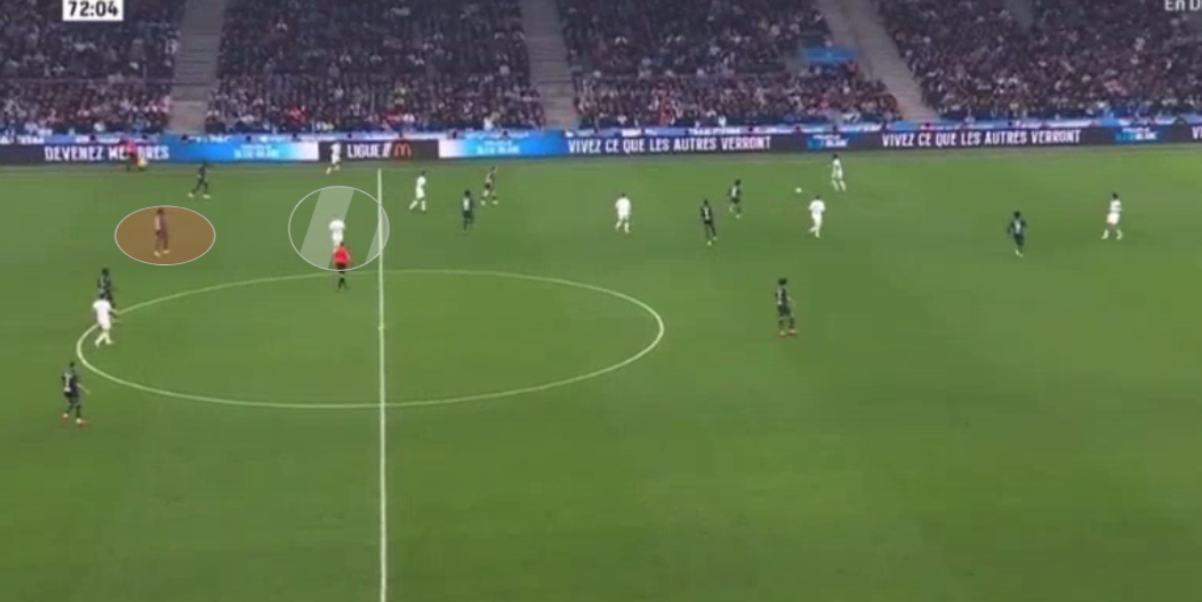
Højbjerg takes a quick glance over his shoulder, spotting the position of the Monaco center-back, Mohammed Salisu behind him. This enables him to confidently execute his next move, knowing exactly where the threat is coming from.
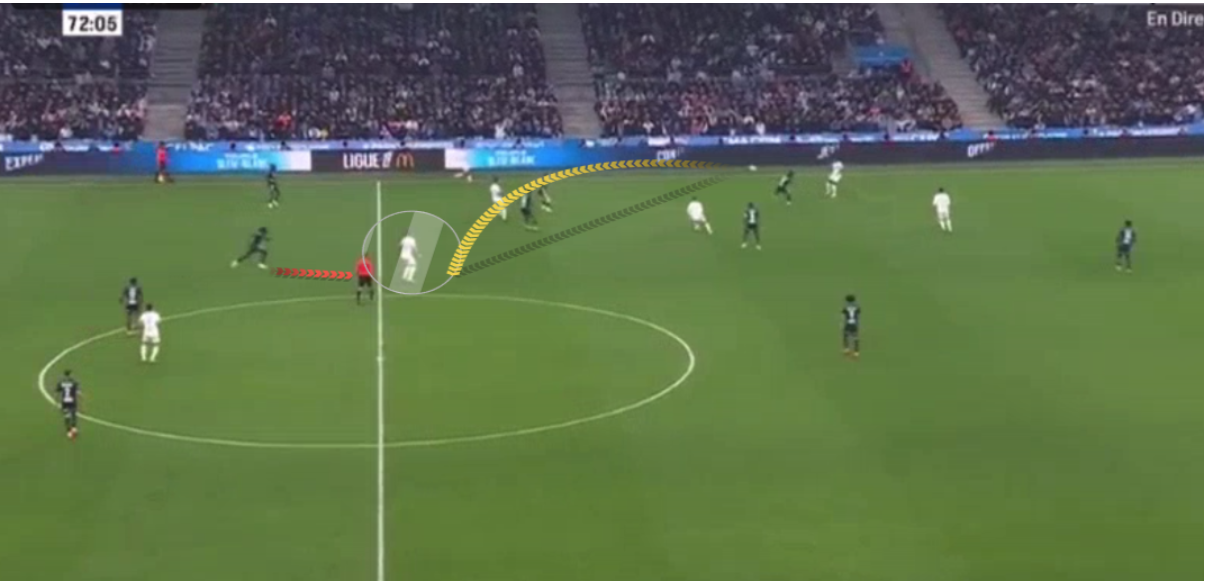
As soon as the long ball is played into his path, Salisu steps up to apply pressure. At first glance, he appears to have done everything right, positioning himself well to win the ball for Monaco. Højbjerg, however, has other ideas.

In stepping up to apply pressure, Salisu leaves a significant gap behind him. Despite this, he is favored to win the ball due to his momentum and physicality. With Højbjerg’s options seemingly limited, everything appears to be in the Ghanaian’s favor.
What Salisu doesn’t realize, however, is that Højbjerg, while fully focused on the flight of the ball, has somehow spotted Mason Greenwood’s run into the vacant space.
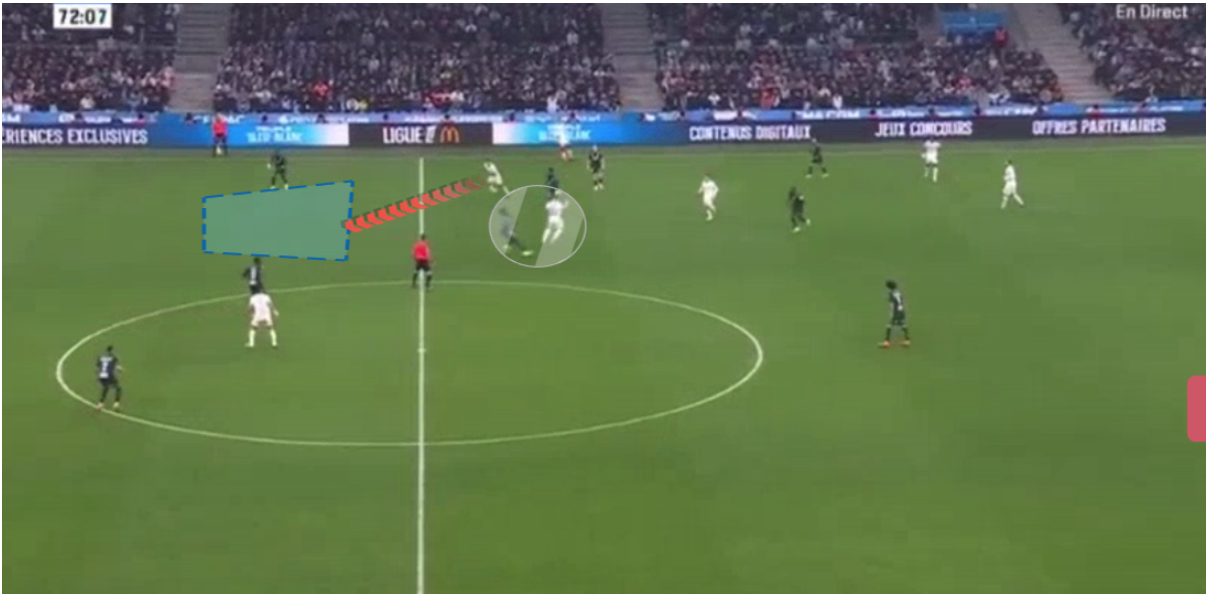
Højbjerg reaches the ball first and delivers a lovely headed pass into the open space for Greenwood to latch onto.
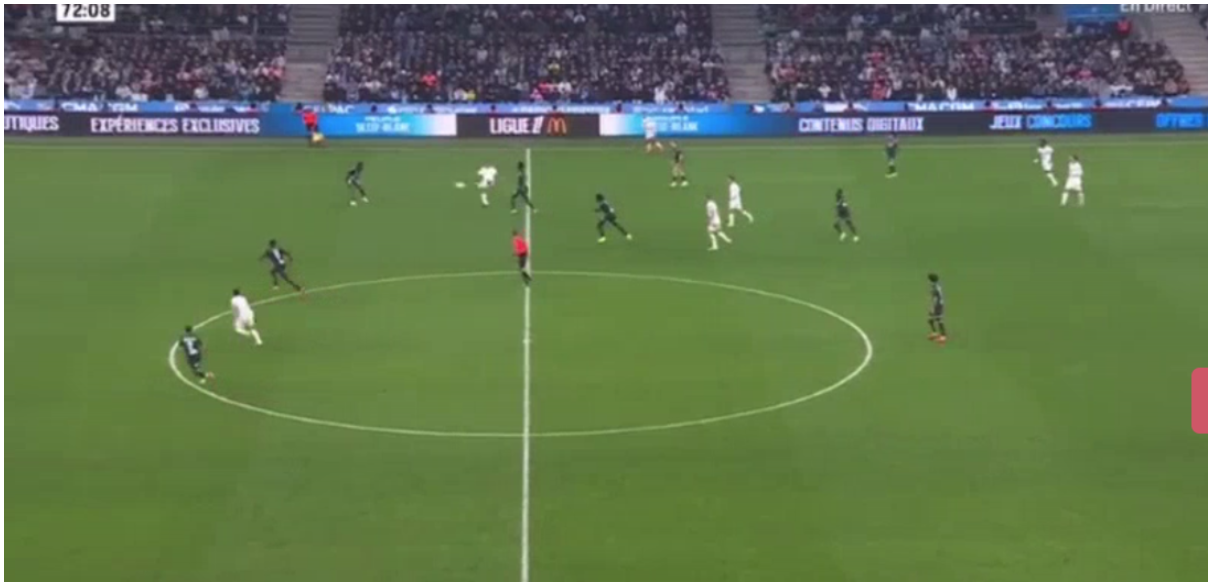
Conclusion
Though often seen as just an enforcer, Højbjerg is much more, with a 90.3% pass accuracy placing him in the 92nd percentile league-wide. Yes, he’s known for his hard tackles and his role as an anchorman. But beyond that, he is an exceptionally intelligent footballer with outstanding timing and spatial awareness.
His ability to read the game and make critical interventions has been instrumental in Marseille’s resurgence. Since his arrival, the team has clearly gone up a level. Højbjerg isn’t just a cog in the machine—he’s the glue that holds it all together.
By: Mark Bruce / @MarkV_Bruce8
Featured Image: @GabFoligno / Dean Mouhtaropoulous / Getty Images
